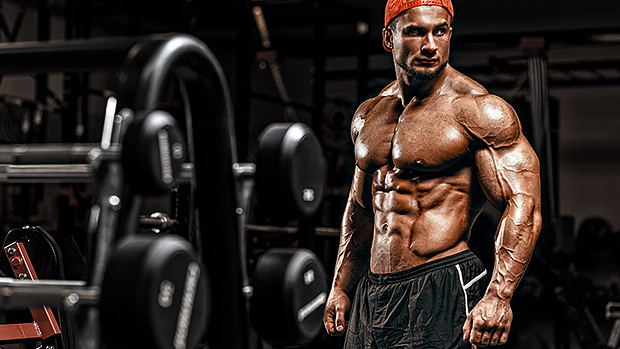How to Start Lifting Weights Safely (Beginner’s Guide)
Walking into a gym for the first time can feel overwhelming. Everywhere you look, people are moving heavy weights with perfect form, machines seem complicated, and you’re not sure where to start.
But here’s the truth: lifting weights is one of the safest, most effective ways to build muscle, get stronger, and improve your health — as long as you approach it correctly.
The biggest mistake beginners make? Jumping in too fast, too heavy, and without a plan. That leads to injuries, frustration, and sometimes quitting altogether.
This guide will walk you step by step through how to start lifting weights safely as a beginner. You’ll learn the fundamental movements, how to warm up properly, how to pick the right weight, and even get a sample beginner-friendly workout program you can start today.
Why Safety Matters in Weight Training
Strength training is not inherently dangerous — but poor technique, rushing progression, or skipping warm-ups can increase your risk of injury. Training safely helps you:
- Avoid injuries — especially in vulnerable areas like shoulders, knees, and lower back.
- Progress faster — setbacks from poor form or injuries slow your results.
- Build long-term consistency — you’re more likely to stick with lifting if it feels good and you’re confident in your movements.
- Lay a strong foundation — the habits you form now will support your training for years to come.
👉 Think long-term. You’re not trying to get strong for next week — you’re building strength and muscle for life.
Step 1: Learn the Basic Movement Patterns
Instead of memorizing dozens of exercises, start by learning the five fundamental movement patterns. Almost every effective strength exercise is built from one of these:
- Push – Bench press, overhead press, push-ups
- Pull – Barbell rows, pull-ups, lat pulldown
- Squat – Bodyweight squats, goblet squats, barbell squats
- Hinge – Deadlifts, Romanian deadlifts, hip thrusts
- Carry – Farmer’s carries, suitcase carries
💡 Start with bodyweight or light dumbbells to master technique. Once you feel confident in your form, gradually increase the load.
Step 2: Warm Up Properly
A good warm-up primes your muscles, joints, and nervous system for lifting. Skipping it is like flooring the gas pedal before your car engine is warmed up.
Your warm-up should include:
- 5–10 minutes of light cardio (rowing, cycling, brisk walking) to raise your heart rate.
- Dynamic stretches such as arm circles, hip openers, and leg swings to loosen joints.
- Warm-up sets with lighter weights before your working sets. For example, if your goal is squatting 60 kg for 3 sets of 8, do a warm-up with 20 kg, then 40 kg before starting your first real set.
This not only prevents injury but also makes your main lifts feel smoother.
Step 3: Use Proper Form
Form is everything in weightlifting. Lifting heavy with bad form is like building a house on a weak foundation — eventually, something breaks.
Universal form rules for beginners:
- Keep your core braced (imagine someone about to punch you in the stomach).
- Maintain a neutral spine (no hunching or over-arching).
- Move with control — avoid bouncing or swinging weights.
- Breathe correctly: inhale on the lowering phase, exhale as you lift.
💡 Pro tip: Record yourself on your phone. Watching your form from the side or front is one of the fastest ways to spot errors.
Step 4: Choose the Right Starting Weight
Picking the right weight is tricky at first, but here’s a simple rule:
- Choose a weight you can lift for 8–12 reps with good form.
- The last 2 reps should feel challenging, but you should still be in control.
- If you can easily do 15+ reps, go heavier.
- If you can’t do at least 6 reps without breaking form, go lighter.
Don’t worry about what others in the gym are lifting. Progression is personal — and it happens fast when you’re consistent.
Step 5: Follow a Simple Beginner Workout Program
Beginners don’t need complicated routines. A full-body workout 3 times per week gives the fastest results because you train each muscle group often enough to learn movements and build strength.
Here’s a beginner-friendly 3-day routine:
Day A
- Squat – 3 sets of 8–10 reps
- Bench Press – 3×8–10
- Dumbbell Row – 3×8–10
- Plank – 3×30–60 seconds
Day B
- Deadlift – 3×5
- Overhead Press – 3×8–10
- Pull-Up or Lat Pulldown – 3×8–10
- Side Plank – 3×30–60 seconds
Alternate between Day A and Day B, training 3 times per week (e.g., Monday, Wednesday, Friday).
Step 6: Recovery & Progression
Muscle growth happens outside the gym when your body recovers. Don’t ignore this step.
- Rest at least 48 hours before training the same muscle group again.
- Apply progressive overload: add a little weight, a rep, or a set each week.
- Sleep 7–9 hours per night to maximize recovery.
- Aim for 1.6–2.2 g of protein per kg of bodyweight per day for muscle growth.
Consistency beats perfection. Small, steady improvements compound over time.
Common Beginner Mistakes to Avoid
- ❌ Ego lifting — choosing weights that are too heavy, sacrificing form.
- ❌ Poor technique — half reps, rounded backs, or bouncing the bar.
- ❌ Skipping warm-ups — jumping straight into heavy sets cold.
- ❌ Overtraining — training hard every day with no rest.
- ❌ Expecting instant results — strength and muscle take weeks, not days.
FAQs About Starting Lifting Weights
Q: How long until I see results?
Most beginners see strength gains within 4–6 weeks and noticeable muscle changes after 8–12 weeks of consistent training.
Q: Do I need supplements?
No — focus on whole foods and protein first. Whey protein and creatine are safe, well-researched, and helpful, but not essential.
Q: Can I build muscle with bodyweight only?
Yes, especially as a beginner. Push-ups, squats, lunges, and pull-ups are effective. But eventually, adding resistance (weights, bands) will help you continue progressing.
Conclusion
Starting your weightlifting journey doesn’t need to be intimidating. By focusing on good form, gradual progression, and recovery, you’ll not only stay safe but also see steady, sustainable results.
Remember: you don’t need to be perfect — you just need to be consistent. In a year, you’ll look back and be amazed at how far you’ve come.
👉 Next up: Full Body vs. Split Workouts — Which Is Best for Beginners?






